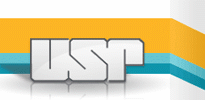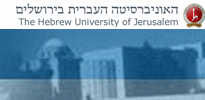Denmark: Denmark Education Profile 2012
2012/03/07
Denmark Education Profile 2012
Education in Denmark is compulsory for children aged approximately 7-16. These nine years of compulsory education is called the Folkeskole ("public school"). About 82% of young people take further education in addition to this. Government-funded education is usually free of charge and open to everyone.
The chief national officer of the education system is Education Minister Bertel Haarder (Liberal Party). However, universities are the responsibility of Helge Sander, Minister of Science, Technology and Development (same party).
Literacy in Denmark is approximately 99% for both men and women.
Recently, some political parties (e.g. Social Democrats and New Alliance) have advocated extending the time of compulsory education from nine to twelve years.
History
The Danish education system has its origin in the cathedral- and monastery schools established by the Roman Catholic Church in the early Middle Ages, and seven of the schools established in the 12th and 13th centuries still exist today. After the Reformation, which was officially implemented in 1536, the schools were taken over by the Crown. Their main purpose was to prepare the students for theological studies by teaching them to read, write and speak Latin and Greek.
Popular elementary education was at that time still very primitive, but in 1721, 240 rytterskoler ("cavalry schools") were established throughout the kingdom. Moreover, the religious movement of Pietism, spreading in the 18th centure, required some level of literacy, thereby promoting the need for public education. The philanthropic thoughts of such people as Rousseau also helped spur developments in education open to all children.
In 1809, the old Clergyman's School was transformed in accordance with the spirit of the time into a humanistic Civil Servant's School which was to "foster true humanity" through immersion in the ancient Greek and Latin cultures combined with some teaching of natural science and modern languages.
Throughout the 19th century (and even up until today), the Danish education system was especially influenced by the ideas of clergyman, politician and poet Nikolaj Frederik Severin Grundtvig, who advocated inspiring methods of teaching and the foundation of folk high schools.
In 1871, the scientific and technical development of the 19th century led to a division of the secondary education into two lines: the languages and the mathematics-science line. This division was the backbone of the structure of the Gymnasium (i.e. academic general upper secondary education programme) until the year 2005.
In 1894, the Folkeskole ("public school", the government-funded primary education system) was formally established (until then, it had been known as Almueskolen ("common school")), and measures were taken to improve the education system to meet the requirements of industrial society.
In 1903, the 3-year course of the Gymnasium was directly connected the municipal school through the establishment of the mellemskole ('middle school', grades 6-9), which was later on replaced by the realskole. Previously, students wanting to go to the Gymnasium (and thereby obtain qualification for admission to university) had had to take private tuition or similar means as the municipal schools were insufficient.
In 1975, the realskole was abandoned and the Folkeskole (primary education) transformed into an egalitarian system where pupils go to the same schools regardless of their academic merits.
Universities
The first university in Denmark, University of Copenhagen, was established in 1479. The second, University of Kiel in Schleswig-Holstein, was established in 1665. When Schleswig-Holstein was conquered by German forces in 1864, the University of Copenhagen was once again the only university in the Kingdom of Denmark and remained so until 1928 when the University of Aarhus was founded. Since then, numerous universities have been established. In addition, there are many independent colleges specializing for instance in educating teachers.
The tuition-less system
Because the politics of Denmark are based on a welfare-state model, almost all educational institutes in Denmark are free. This tuition-less system applies to:
- Those who have been born in Denmark as 'national Danes'
- Those who hold a permanent resident visa
- Those who hold a humanitarian visa
- Those from the Nordic Council
- Those from the European Economic Area or European Union.
To further assist students in Denmark, all Danish citizens (and many others meeting certain criteria) are offered a bursary, called "SU" (Statens Uddannelsesstøtte which translates to The State's Educational Support), which totals about DKK 2,412 monthly if the student lives with his/her parents or former guardians, and about DKK 4,852 monthly if the student lives away from his/her parents or former guardians. The bursary is considered income and a high tax has to be paid resulting in a maximum bursary of DKK 3,600 monthly.
Students can supplement the SU with student loans amounting to DKK 2483 per month, which must be paid back upon the completition of their education.
Today
Today, education in Denmark is broken down into five age groups:
- Pre-School Education
- Folkeskole Education
-
Secondary Education
- Gymnasium
- Higher Preparatory Examination (HF)
- Higher Commercial Examination Programme
- Higher Technical Examination Programme (HTX)
- Vocational secondary education
- Higher Education (see also List of universities in Denmark)
-
Adult Education
Secondary education in Denmark (in Danish: ungdomsuddannelse, "youth education") usually takes two to four years and is attended by students between the ages of 15 to 20. Secondary education is not compulsory, but usually free of charge, and students have a wide range of programmes to choose from. Some education programmes are academically oriented, the most common being the Gymnasium, while other programmes are more practically oriented, training students for jobs as e.g. artisans or clerks through a combination of teaching in vocational schools and apprenticeship.
This historical overview of general upper secondary education is divided into a number of headings, firstly four covering the main academically oriented programmes (one covering the three-year Gymnasium, one covering the two-year Higher Preparatory Examination (HF), one covering the 3-year Higher Commercial Examination Programme (HHX), and one covering the three-year Higher Technical Examination Programme (HTX) secondly headings covering vocational education programmes.
Gymnasium
The Gymnasium has its origin in the cathedral- and monastery schools established by the Roman Catholic Church in the early Middle Ages, and seven of the schools established in the 12th and 13th centuries still exist today. The medieval schools had — broadly speaking — only one purpose: To educate the servants of the Catholic Church. After the Reformation, which was officially implemented in 1536, the schools were taken over by the Crown, but their purpose was still to prepare the students for theological studies by teaching them to read, write and speak Latin and Greek, although it now was for the benefit of the Protestant Church.
This educational base was maintained nearly unchanged until 1809, when the old Clergyman's School was transformed in accordance with the spirit of the time into a humanistic Civil Servant's School which was to "foster true humanity" through immersion in the ancient Greek and Latin cultures combined with some teaching of natural science and modern languages.
In 1871, the scientific and technical development of the 19th century led to a division of the education into two lines: the languages and the mathematics-science line. A division which was the backbone of the structure of the Gymnasium until the year 2005, when a reform of the Gymnasium was pulled through. Today, the each Gymnasium offer a selection of lines decided by each individual Gymnasium. These often include a different linguistical lines, different scientific lines, different creative lines and various collections of combinations of bundled subjects.
In 1903, the languages line was split into two, a classical line preserving extensive teaching in Latin and Greek and a modern languages line in which Latin and Greek were replaced by English, German, and French as the main subjects. At the same time, the 3-year course of the Gymnasium was directly connected with the municipal school through the establishment of the mellemskole ("middle school", grades 6-9), which was later on replaced by the realskole.
According to the latest reform, the Gymnasium still offers three years of general upper secondary education in two lines. The division of the two lines into three branches each has however been replaced by a more flexible system, where each of the lines has a core curriculum of obligatory subjects and a number of optional subjects which can be taken at two levels.
The Higher Preparatory Examination (HF)
The Higher Preparatory Examination (HF) was introduced in 1967 in a political climate that was characterised by a desire to extend educational possibilities to new groups in society. Originally, it was the idea to create a two-year course aimed specifically at prospective candidates for teacher training. There was however a concern that this concept might result in an educational cul-de-sac. So the course design was changed into an alternative route to further and higher education.
The students that were entering the new HF-programmes were mainly adults. But from the start, the HF also appealed to young people who for social or personal reasons had not followed the straight route via the Gymnasium to higher education.
The HF is thus the "sweeper" of the general upper secondary education level. In the Gymnasium, there is still an overrepresentation of middle class children (40% male/60% female), whereas the HF recruits its predominantly female students from a broader base of society (30% male/70% female).
Higher Commercial Examination Programme (HHX)
The Higher Commercial Examination Programme (HHX) started in 1888 on a private initiative at Niels Brock's Business College in Copenhagen with a structure, which in the main can be found in the course today. The range of subjects comprised both commercial and general subjects.
In 1920, the Rigsdag. the parliament of the time, adopted the first business college act, which i.a. entitled the Niels Brock Business College to call itself a "higher business school". This act introduced supervision of the activities of the business colleges, and the HHX became a State-controlled examination. In 1927, the first ministerial orders were issued regarding the content of the teaching which in all essentials dealt with the existing teaching.
The course was managed by the Ministry of Trade until 1965, when the responsibility was transferred to the Ministry of Education.
The HHX did not originally qualify for admission to universities and other higher education institutions in the university sector. The universities did not consider the general part of the programme sufficient. It was not until 1972 that the HHX was given the status of a university entrance examination in connection with a revision of the content and the introduction of more rigorous admission requirements. At the beginning of the 1970s, the programme was run by about half of the business colleges. By 1982, the course was offered at all business colleges.
The Higher Technical Examination Programme (HTX)
The Higher Technical Examination Programme (HTX) was established on an experimental basis in 1982. The reason for its establishment was a desire to contribute to a broader supply of education and training possibilities following the EFG-basic courses and a desire to create a new and relevant way of access to higher education in the technical area. In this context, it was of importance that fewer and fewer skilled workers continued at the engineering colleges, whereas the number of general upper secondary graduates increased significantly.
Another reason for establishing the HTX-programme on an experimental basis was the need to strengthen the status of the technical schools. Broad education and training possibilities at the schools were to provide a broader and qualitatively better recruitment.
In 1982, the HTX-experiment was carried out at the technical schools in Sønderborg, Aalborg, and Copenhagen. The pilot period lasted until the spring of 1988, after which the programme was evaluated and made permanent after minor adjustments had been made to the individual subjects. On the same occasion, the HTX-examination was granted the status of a university entrance examination, and the graduates were now in principle placed on an equal footing with those of the Gymnasium, the HF and the HHX programmes as far as access to higher education was concerned.
Vocational Upper Secondary Education
This section deals with the vocational education and training and basic social and health education programmes.
Apprenticeship training in a well-organised form originates in the guilds of the Middle Ages. Each trade had its own guild in each town. The guilds fixed the duration of the training of apprentices, their wages and working conditions and the disciplines they were to learn. It was furthermore the guilds which held the journeymen's tests.
- Denmark News
-
- AFGHANISTAN: UNWTO: International tourism – strongest half-year results since 2010
- ALBANIA: US LNG exports make European market more competitive
- AFGHANISTAN: Higher earning Why a university degree is worth more in some countries than others
- DENMARK: Low-cost housing, maximizing water surface
- DENMARK: Denmark is least corrupt; Somalia, NKorea the most
- ALBANIA: Europe in 2016: Terror fears, migration, politics. But economy may turn a corner
- Trending Articles
-
- SOUTH AFRICA: KPMG's South Africa bosses purged over Gupta scandal
- CHINA: Life after Rosneft deal: CEFC ambitions face debt, regulatory hurdles
- TANZANIA: Critic of Tanzania's Magufuli moved to Kenya for treatment of gunshot wounds
- CHINA: BRICS countries considering own cryptocurrency as settlement mechanism
- ITALY: Italy Current Account Surplus Grows In June
- CHINA: Zhongwang Acquires German Alumnium Extrusion Firm ALUnna













